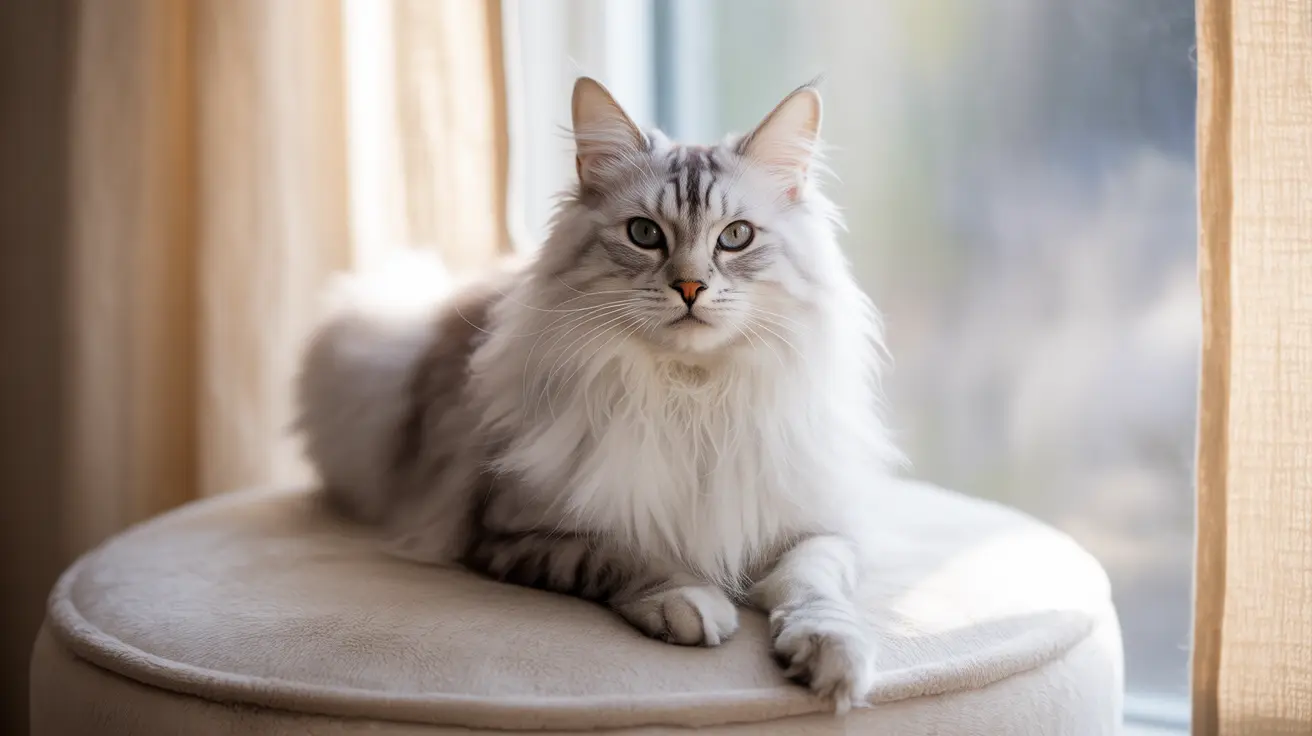The Turkish Angora is one of the most elegant and distinctive cat breeds in existence. With their graceful appearance and charming personality, these cats have captivated pet lovers for centuries. If you're wondering whether your feline friend might be a Turkish Angora, this comprehensive guide will help you identify their unique characteristics.
Understanding how to identify a Turkish Angora cat requires attention to several key features, from their distinctive silky coat to their unique personality traits. Let's explore the defining characteristics that make this breed truly special.
Physical Characteristics of Turkish Angora Cats
Distinctive Coat Features
The Turkish Angora's most notable feature is its stunning coat. Unlike many other long-haired breeds, they have a single coat that's silky and medium to long in length. While white is the most famous color, Turkish Angoras can come in various colors and patterns, including black, blue, cream, and tabby. Their coat flows gracefully when they move and lacks an undercoat, making it less prone to matting.
Body Structure and Build
Turkish Angoras possess a slender yet muscular frame that epitomizes feline grace. They typically stand 9-14 inches tall and weigh between 5-10 pounds. Their hind legs are slightly longer than their front legs, giving them an elegant stance and fluid movement. Look for a long, lean body with fine bones and small, delicate oval paws.
Facial Features and Expression
The breed features a distinctive wedge-shaped head with large, almond-shaped eyes that can be any color, including blue, green, amber, or even odd-colored (heterochromia). Their large, pointed ears sit high on the head and often sport tufts of fur. The face shows a smooth profile with a medium-length nose and slightly rounded chin.
Behavioral Traits and Personality
Turkish Angoras are known for their vibrant personalities and high intelligence. They're incredibly social cats that form strong bonds with their human families. These cats often choose a favorite person and show intense loyalty to them.
- Exceptional intelligence and ability to learn tricks
- High energy levels and playfulness
- Strong social nature and vocal communication
- Independent yet affectionate disposition
- Adaptability to various living situations
Distinguishing Features from Similar Breeds
To ensure you're correctly identifying a Turkish Angora, it's important to note how they differ from similar-looking breeds:
Compared to Persian cats
- Turkish Angoras have a wedge-shaped face (vs. Persian's flat face)
- Their coat is silkier and less dense
- They have a more athletic build
Compared to Turkish Vans
- Turkish Angoras are generally smaller and more delicate
- They can be any color (vs. Van's specific color pattern)
- They have a more refined bone structure
Frequently Asked Questions
How can I visually identify a Turkish Angora cat based on its coat and body shape?
Look for a single-layered, silky coat without an undercoat, and a slender, athletic body with longer hind legs. The cat should have a graceful appearance with fine bones and flowing fur movement.
What unique facial features and eye colors help distinguish a Turkish Angora cat from other breeds?
Turkish Angoras have a wedge-shaped head, large almond-shaped eyes that can be any color (including odd-colored), and large, high-set triangular ears with tufts.
How does the personality of a Turkish Angora cat differ from other cat breeds?
Turkish Angoras are notably intelligent, social, and vocal cats that form strong bonds with their families. They're more playful and interactive than many other breeds and often show dog-like loyalty.
What are the key health concerns and care tips for Turkish Angora cats?
Watch for potential deafness in white cats with blue eyes, and monitor for heart conditions. Regular grooming is needed despite their single coat, and they require plenty of mental and physical stimulation.
How do Turkish Angora cats differ physically and behaviorally from similar breeds like Turkish Vans or Persians?
Turkish Angoras are more delicate and refined than Turkish Vans, with a different coat pattern allowance. They're more athletic and have a distinctly different head shape than Persians, with a more active personality.
Conclusion
Identifying a Turkish Angora requires careful observation of both physical and behavioral traits. Their combination of elegant appearance, distinctive coat, and engaging personality makes them truly unique among cat breeds. Whether you're considering adopting one or simply curious about your current pet's breed, understanding these characteristics will help you properly identify a Turkish Angora cat.






